Barrhaven Clay Soil Recovery: Fix Compaction This Spring
Quick Summary
- Barrhaven often has heavy clay soil prone to compaction.
- Compaction prevents air, water, and nutrients from reaching roots.
- Signs include puddling, hard soil, thin grass, and runoff.
- Spring is ideal for recovery using core aeration and topdressing.
- Long-term health involves adding organic matter and managing traffic.
Need help reviving your compacted lawn? Request a free quote today!
Introduction: Is Your Barrhaven Lawn Feeling a Bit... Squished?
Hey Barrhaven homeowners! Does your lawn look like it’s feeling a bit… squished after the long Ottawa winter? Maybe it's looking less like a lush carpet and more like the well-worn path the kids take to the trampoline? If your grass seems to be gasping for air, the likely culprit is soil compaction.
It's a common issue around here, especially with the heavy clay soil often found in Barrhaven and neighbouring areas like Nepean. Clay particles naturally like to stick close together, and after months buried under snow and ice, plus the usual foot traffic from people and pets, they can get packed down tight. Think of it as your lawn wearing shoes two sizes too small!
This squeeze play makes it tough for vital air, water, and nutrients to actually reach the grassroots. Your lawn might struggle to grow evenly, look thin, or even have puddles linger after rain because the water can't soak in properly.
But don't worry! Spring is the ideal comeback season for your lawn. The ground has thawed but isn't baked hard by summer heat, making it the perfect time for some recovery work. Your grass is naturally kicking into gear, ready to grow, and just needs a little help. Coming up, we'll dig into simple landscaping and gardening solutions, focusing on techniques like aeration and improving your soil structure, to help your lawn loosen up, breathe easy, and get back to being that beautiful green space you enjoy.
The Barrhaven Squeeze: Why Clay Soil Gets So Compacted Here
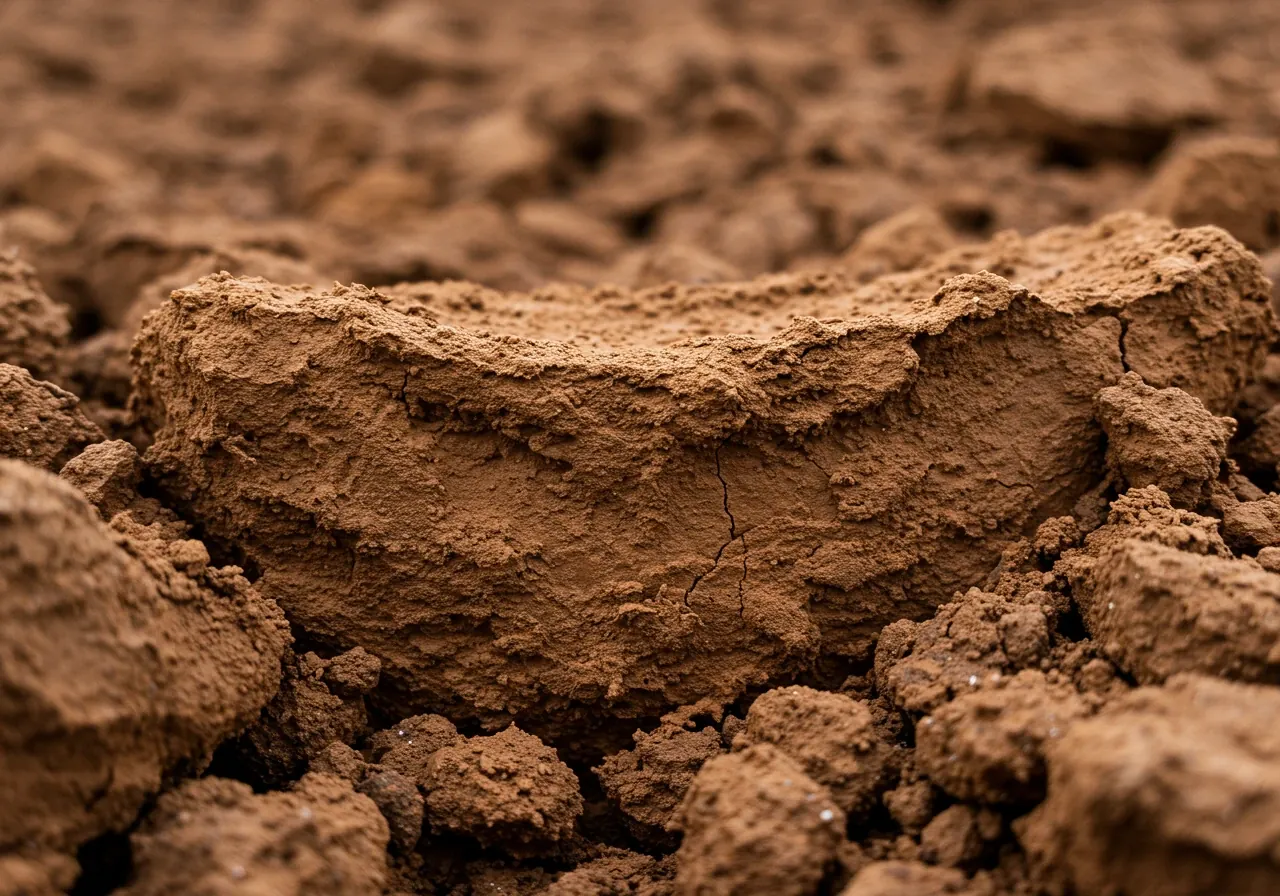
Alright, let's talk dirt! Specifically, the kind of dirt we have underfoot here in Barrhaven and across much of the Ottawa region. If you've ever tried digging after a dry spell, you know our soil can feel less like earth and more like concrete. That’s because we're often dealing with clay soil, and it has a special talent for getting seriously compacted.
So, what’s the deal with clay? Imagine tiny, microscopic plates. That’s kind of what clay particles are like – super fine and flat. When they get wet, they slide around easily (hello, muddy boots!). But when they dry out, or when pressure is applied (like walking on it), these little plates stick together tightly, squeezing out the air and water pockets that plant roots desperately need. Unlike sandy soil with its bigger, rounder particles that leave lots of space, clay just loves a good cuddle, which isn't great for your lawn or gardening efforts.
Here in the Ottawa valley, including Barrhaven and neighbouring areas like Manotick, we often have a specific type called Leda clay (or Champlain Sea clay). It's leftover sediment from an ancient sea that once covered this area. This clay is known for being particularly fine and silty, making it extra prone to packing down hard. It’s like the heavyweight champion of compaction! You can learn more about regional soil types from resources like the Rideau Valley Conservation Authority.
Now, besides its natural tendency to get squished, several things in our typical suburban lives make it worse:
- Foot Traffic: Yep, just walking around! Kids playing tag, the path to the shed, your dog chasing squirrels – it all adds up, pressing those clay particles closer together. Even setting up chairs around popular popular Barrhaven fire pit designs contributes over time.
- Heavy Equipment: Your trusty lawnmower (especially riding ones), wheelbarrows used for landscaping projects, or even contractors working on home improvements can compact the soil significantly. It's a common issue tackled during a thorough commercial spring cleanup in Barrhaven too, as businesses face similar pressures.
- Water Woes: While clay needs some moisture, heavy rain or poor drainage can saturate the ground. When the water eventually drains or evaporates, the clay particles settle even closer together, especially if walked on while wet.
- Building & Landscaping: Remember when your house was built? Or maybe when you added that lovely new garden bed or considered unique creative spring garden techniques like espalier? Construction and major landscaping activities often involve heavy machinery and lots of disruption, leading to serious compaction. Even ambitious DIY projects, like exploring adding features like fall pergola ideas, can compact areas if you're not careful where you tread.
- Lack of Organic Matter: Healthy soil has lots of decomposed plant material (think compost!). This stuff helps create spaces between clay particles, improving soil structure. Clay soil often lacks enough of this naturally.
Understanding why our Barrhaven soil gets so tight helps us figure out how to fix it. Techniques like core aeration are fantastic for physically breaking up compaction, and adding organic matter is key for long-term improvement. Sometimes, getting a handle on severe compaction requires a bit more muscle, which is where considering professional landscaping services can make a big difference. If your lawn looks truly stressed, a targeted Barrhaven yard cleanup service might include aeration to specifically address this squeeze.
Warning Signs: Is Your Lawn Sending Out an SOS?
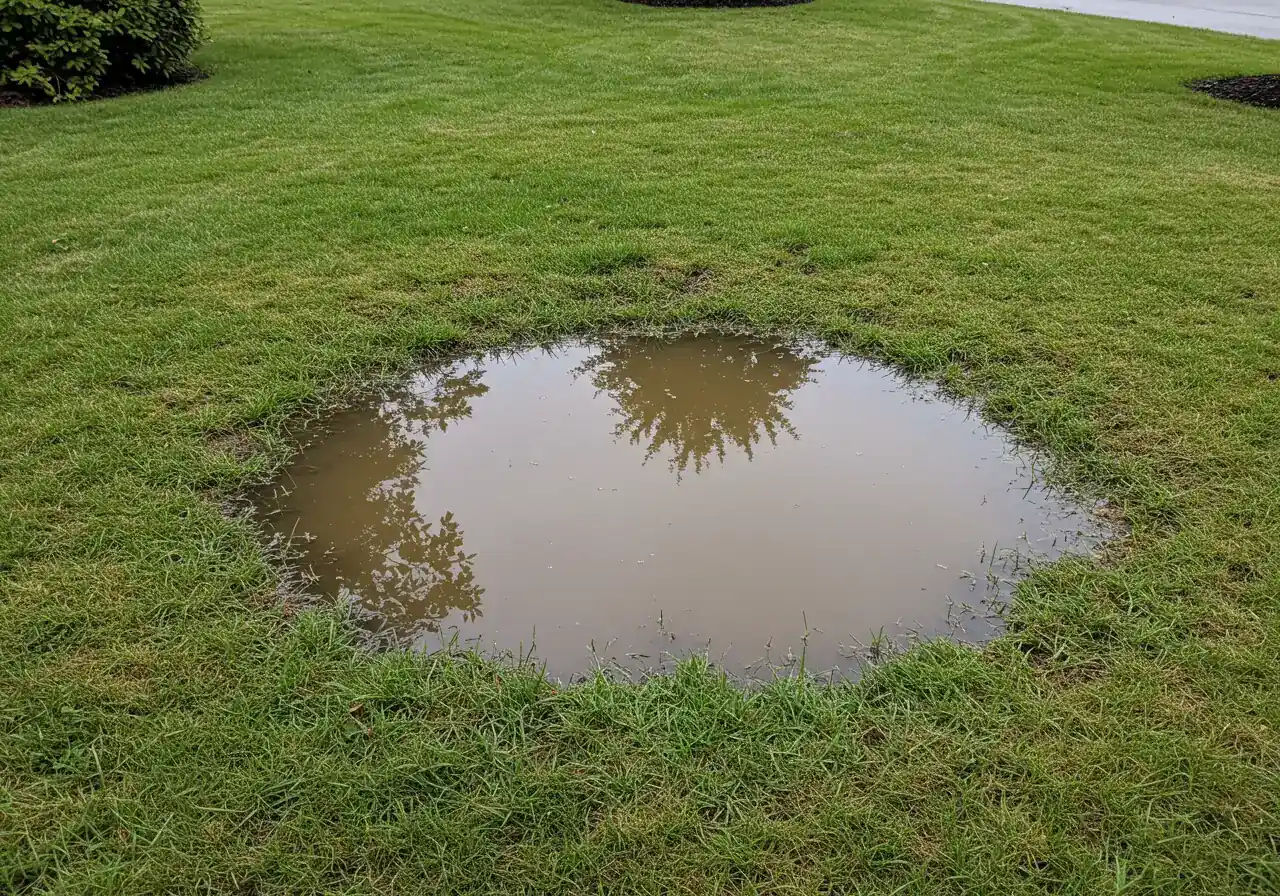
Okay, let's decode what your lawn might be trying to tell you. Sometimes, the signs are subtle, like a polite cough, and other times they're screaming louder than a seagull trying to steal your fries at Mooney's Bay. If your lawn in Barrhaven, Richmond, or anywhere around Ottawa is struggling, compaction might be sending out an SOS.
Here are some clues your soil might be feeling the squeeze:
- Puddle Problems: Does your lawn stay soggy long after a rainfall, with puddles hanging around like uninvited guests? Compacted soil acts like a poorly sealed container – water can’t soak in properly.
- Hard as a Rock (Almost!): Is jamming a garden fork or even tent pegs into the ground a serious workout? Is your lawn harder than remembering your high school locker combination? Super hard soil is a classic sign that things are packed down tight.
- Thinning Hair… uh, Grass: Are you noticing patches where the grass looks thin, weak, or just plain refuses to grow, especially in high-traffic areas? Roots can't penetrate or spread out in compacted soil, leading to a receding grass-line.
- Runoff Rampage: On sloped areas, do you see water (and maybe topsoil or fertilizer) washing away instead of soaking in? That's water hitting a wall of compacted soil and deciding to take the easy way out.
- Weed Welcome Mat: Certain weeds, like plantain, knotweed, and crabgrass, actually thrive in compacted soil where your preferred grass struggles. If weeds are taking over prime real estate, it might be because the conditions favour them. More info on common weeds can often be found via resources like the City of Ottawa's invasive plants guide.
- Stunted Growth: Is your lawn just looking generally unhappy, with poor colour and slow growth, even when you're watering and fertilizing? It might be starving because nutrients can't reach the roots effectively.
The Super-Scientific Screwdriver Test (Okay, maybe not super scientific):
Want a quick DIY check? Grab a regular screwdriver (a long one works best). After a decent rain or watering (don't try this on bone-dry ground), try pushing it into your lawn soil by hand.
- Easy Peasy: If it slides in easily several inches (say, 4-6 inches or more), your soil compaction is likely minimal. Hooray!
- A Bit of a Struggle: If you meet resistance after only a couple of inches and have to push hard, you've likely got moderate compaction.
- Mission Impossible: If you can barely penetrate the surface, or it feels like you're trying to stab concrete, you’ve got significant compaction. Your lawn is definitely sending that SOS!
Recognizing these signs is the first step. If your screwdriver test reveals a problem, or if you're seeing multiple symptoms, it’s time to think about solutions like aeration. For persistent issues, especially in larger areas like those found in Metcalfe or Marionville, getting professional help might be the way to go. A thorough cleanup can address the underlying compaction issues; our crews providing the Metcalfe yard cleanup service see this often. Similarly, residents needing a Marionville yard cleanup service frequently deal with compacted clay. Improving soil structure often involves adding organic matter too – you can learn more about choosing the right amendments with proper material selection. If you suspect compaction is a major factor in your lawn woes, sometimes a targeted Barrhaven yard cleanup service that includes aeration is the most effective approach. Wondering how we handle your info if you reach out? You can review our Privacy Policy anytime. Feel your lawn needs a professional diagnosis? Don't hesitate to Contact Us for expert advice tailored to your Ottawa property or check out our Google Business Profile for reviews and updates.
Comparing Compaction Solutions
Core Aeration
What it is: Physically removing small plugs (cores) of soil from the lawn using a machine.
Pros: Directly addresses compaction by creating channels for air, water, and nutrients. Very effective for heavy clay. Improves drainage immediately. Ideal preparation for overseeding and soil preparation.
Cons: Can be labor-intensive (machines are heavy). Leaves temporary cores on the lawn (they break down). Best done during active growing seasons (spring/fall).
Best For: Significantly compacted lawns, heavy clay soil, lawns with thatch buildup.
Topdressing with Organic Matter
What it is: Spreading a thin layer of compost or rich topsoil over the lawn, ideally after aeration.
Pros: Gradually improves soil structure over time. Adds vital nutrients and beneficial microbes. Enhances moisture retention. Helps break down thatch. Supports services like mulching and edging by improving overall soil health.
Cons: Doesn't provide immediate deep compaction relief like aeration does. Requires sourcing good quality material. Can be labor-intensive for large areas.
Best For: Long-term soil health improvement, complementing aeration, boosting nutrient levels.
Liquid Aeration
What it is: Applying a liquid solution (often containing surfactants or biological agents) designed to loosen soil particles.
Pros: Easier to apply than core aeration (just spray it on). No cores left behind. Can sometimes penetrate deeper than mechanical aeration depending on the product and soil.
Cons: Effectiveness on heavy clay can be debated; results may be less dramatic or immediate compared to core aeration. Doesn't physically remove soil plugs. May require repeat applications.
Best For: Lightly compacted soils, maintaining soil health between core aerations, situations where mechanical aeration isn't feasible.
Prevention Strategies
What it is: Ongoing practices to minimize compaction.
Pros: Addresses the root causes. Reduces the need for frequent, intensive remediation. Promotes overall lawn and garden health.
Cons: Requires consistent effort and awareness. Doesn't fix existing severe compaction.
Includes: Redirecting foot traffic, avoiding heavy equipment on wet soil, regular addition of organic matter (grasscycling, mulching), choosing appropriate plants. Integral part of holistic lawn care and garden maintenance.
Spring Rescue Mission: Your Action Plan for Fluffy Soil
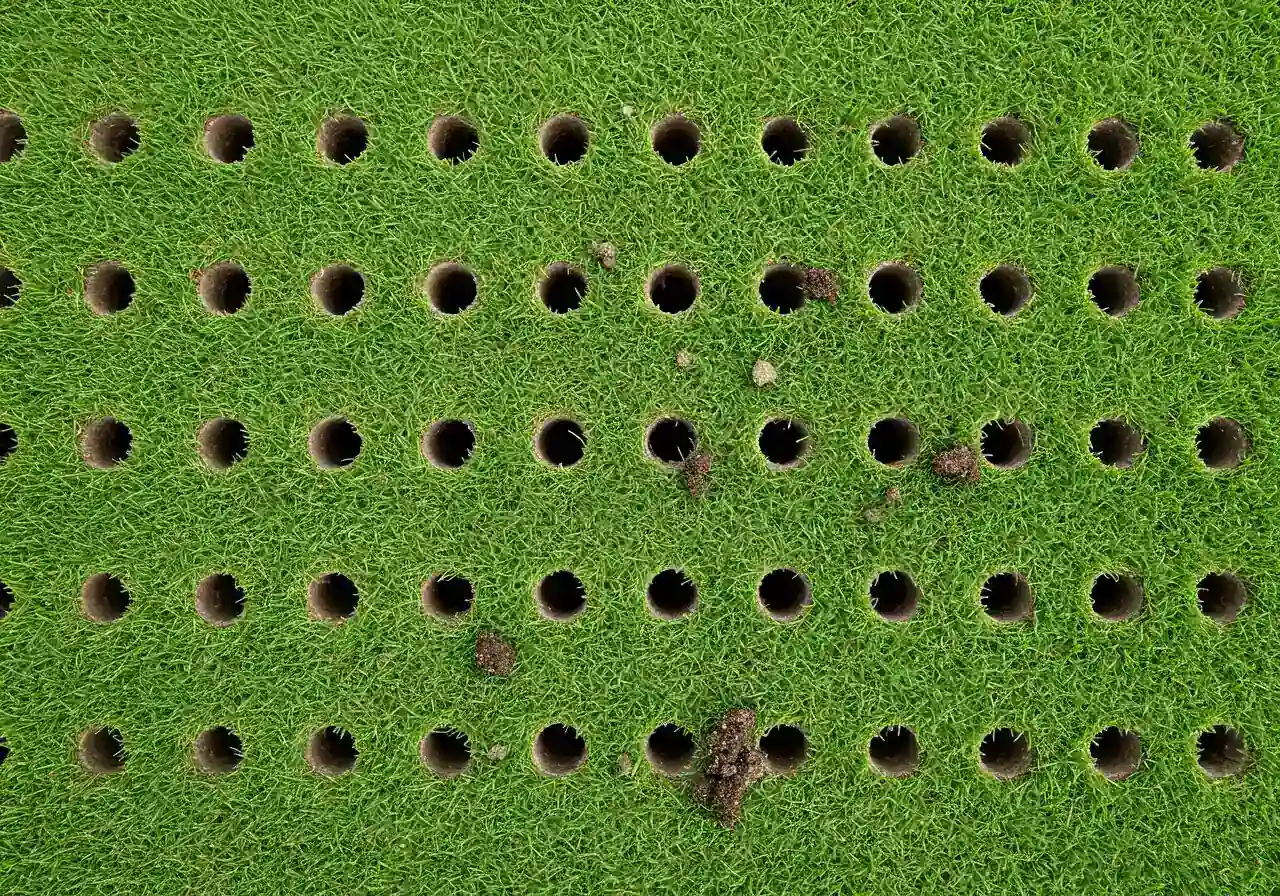
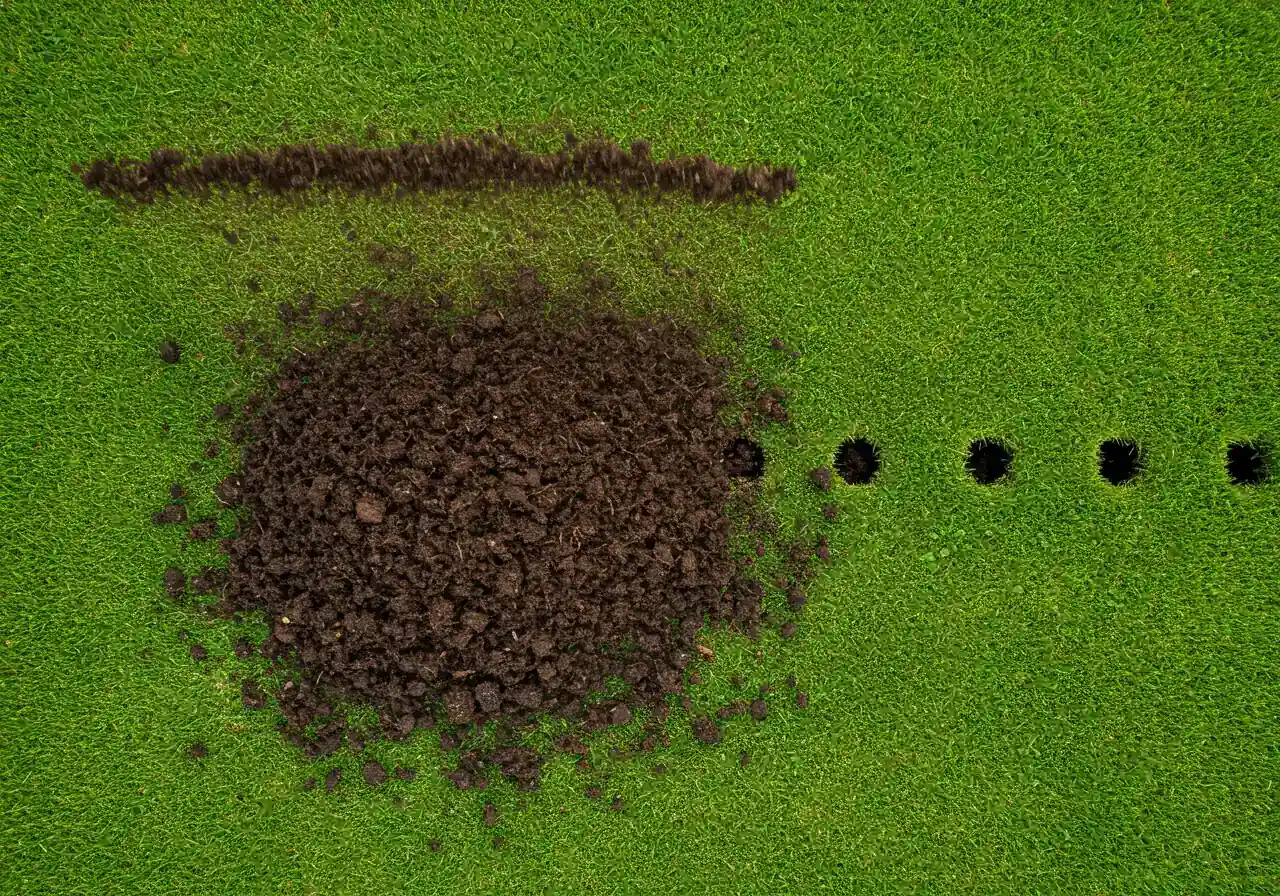
Alright team, let's launch Operation: De-Squish! Your lawn might feel like it ran a marathon through molasses over the winter, ending up packed tighter than a drum. But fear not! Spring in Ottawa is the perfect time for a soil rescue mission. The ground is workable, your grass is waking up hungry, and with a little effort, we can turn that compacted clay into happier, fluffier soil where roots can wiggle with joy. Here’s your action plan:
Step 1: Bring in the Core Aerator (The Lawn Perforator!)
Think of core aeration as giving your lawn a much-needed spa treatment involving tiny extraction holes. This isn't just poking holes (like with spike aeration, which can sometimes make clay compaction worse); it's about pulling out small plugs or "cores" of soil.
- Why it Works: These little holes create channels that break up the compacted layers. Air, water, and nutrients can finally penetrate down to the grassroots where they're desperately needed. It’s like opening windows in a stuffy room!
- Ottawa Timing: The best time for aeration in our climate (whether you're in Nepean, Greely, or closer to downtown) is typically mid-to-late spring (May is often ideal) after the ground has fully thawed but before the summer heat kicks in. You want the grass to be actively growing so it can recover quickly.
- DIY or Pro? You can rent core aerators, but they can be hefty beasts to handle. If you're dealing with significant compaction or have a large area, getting professional help might be easier. Many companies offering an Ottawa yard cleanup service include aeration as a key part of spring lawn care.
Step 2: The Topdressing Treat - A Healthy Soil Snack
After you've opened up the soil with aeration, it's time to add some goodness back. Topdressing simply means spreading a thin layer (usually about ¼ to ½ inch) of high-quality organic material over your lawn.
- What to Use: Good quality compost or a screened topsoil mix rich in organic matter is perfect. Avoid heavy clay or sand on its own. You want light, nutrient-rich material.
- The Magic: This organic matter works its way into the aeration holes and over the surface. It gradually improves the soil structure, making it less prone to compaction over time. It also adds nutrients, helps retain moisture better, and encourages beneficial soil microbes. Think of it as a long-term investment in fluffiness! Good soil is also fundamental before undertaking any new garden installation, so these principles apply beyond just the lawn.
Step 3: Overseeding Boost - Thicken Up the Green Carpet
While the soil is open and receptive after aerating and topdressing, it's the perfect time to overseed. This just means scattering grass seed over your existing lawn.
- Why Now? The seeds fall into the aeration holes and make excellent contact with the fresh topdressing and loosened soil – ideal conditions for germination!
- Benefits: It helps fill in those thin, struggling patches caused by compaction, thickens the lawn overall (making it more resilient to weeds and stress), and can introduce newer, hardier grass varieties suited to the Ottawa climate.
Step 4: Water Wisely - Quench the Thirst
Newly aerated, topdressed, and overseeded lawns need consistent moisture to get established.
- Initial Watering: Water lightly but frequently (maybe once or twice a day for short periods) for the first week or two to keep the seeds consistently moist. Avoid creating puddles or washing the seed away.
- Long-Term Watering: Once the new grass starts growing, transition back to a deeper, less frequent watering schedule. This encourages roots to grow down deep into the improved soil, making your lawn more drought-tolerant in the long run.
A Quick Word on Soil Amendments
You might hear about amendments like gypsum for clay soil. While they can sometimes help, their effectiveness depends heavily on your specific soil chemistry. Adding amendments without knowing what your soil actually needs can sometimes do more harm than good. For most homeowners, focusing on core aeration and consistently adding organic matter through topdressing is the safest and most effective route to improving soil structure. If you suspect major issues, a soil test is the best starting point before adding specific chemical amendments.
Putting It All Together
This spring combo – aeration, topdressing, and overseeding – is a powerful way to combat soil compaction and revitalize your lawn. Yes, it's a bit of work, but the results are worth it! Your grass will thank you with lush, green growth.
If tackling this seems daunting, remember that professional help is available. Services ranging from a general city yard cleanup service to more targeted lawn remediation are common. Dealing with compaction is a frequent task for crews providing the Metcalfe property cleanup service or the Marionville property cleanup service, as many properties face this challenge. And if the compaction is truly severe and years of neglect have taken their toll, sometimes a complete overhaul with professional sod installation is the fastest way to a beautiful lawn, though fixing the existing soil is always the preferred first step. You can review our Terms and Conditions for service details.
Give your lawn the breathing room it needs this spring, and enjoy a healthier, happier green space all season long!
Estimated Soil Improvement Over Time
*Chart represents estimated cumulative improvement in soil structure and drainage with consistent annual spring treatment (aeration & topdressing) and good maintenance practices on typical heavy clay soil. Actual results vary.
Keeping It Loose: Long-Term Strategies for Healthy Barrhaven Soil
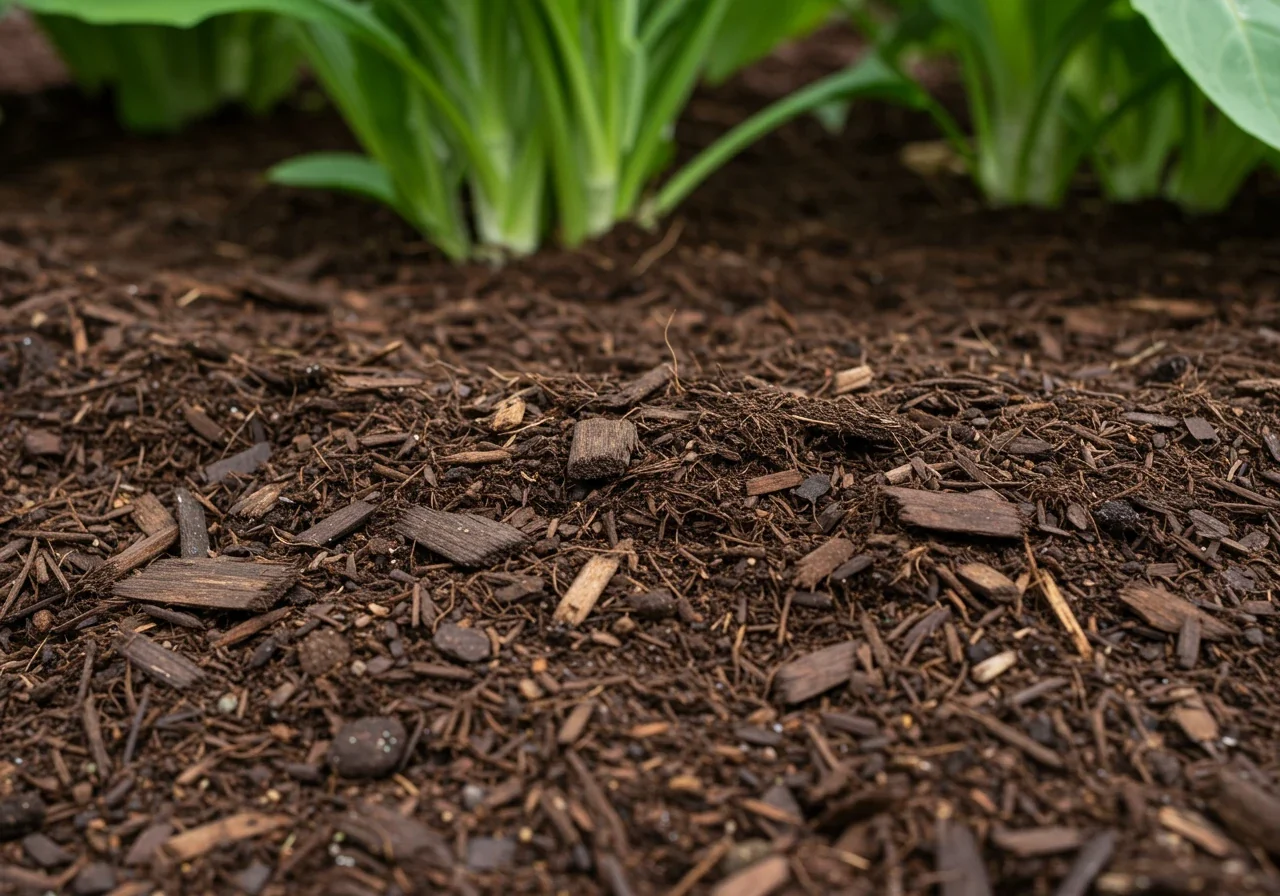
Okay, so you tackled the spring rescue mission – Operation: De-Squish was a success! Your Barrhaven soil is breathing easier. But like remembering to take out the recycling, keeping soil healthy isn't a one-time job. It’s about long-term habits that prevent that dreaded compaction from creeping back in. Think of it as ongoing physiotherapy for your yard! Here’s how to keep things loose and lovely for the long haul.
The absolute champion of long-term soil health is organic matter. Keep feeding your soil! Leave grass clippings on the lawn when you mow (grasscycling!), mulch your garden beds with wood chips or shredded leaves, and add compost whenever you can. Think of compost as a superfood smoothie for your soil. Over time, this decomposing material builds better soil structure, creating those vital air and water pockets, especially crucial in our Ottawa clay. These ongoing soil preparation efforts make a huge difference year after year.
Be mindful of where you walk and roll heavy things! Establish clear pathways for foot traffic instead of cutting across the lawn constantly. Avoid parking vehicles or using heavy wheelbarrows on the lawn, especially when it's wet – that’s like squishing a wet sponge! If you must cross the lawn with something heavy, lay down some plywood boards temporarily to distribute the weight. This is a common issue tackled when managing soil compaction during city property cleanup service on larger or public spaces.
Choose plants wisely! Select species known to tolerate clay soil and thrive in our Ottawa climate (think hardy perennials, shrubs, and grasses). Plants with deeper root systems naturally help break up compacted layers over time. Native plants are often fantastic choices. Ensuring good soil before planting is key, especially when choosing plants for a new garden installation. Also, water deeply but less frequently. This encourages roots to grow deeper, making your lawn and gardens more drought-resistant and less prone to surface compaction.
Address areas where water constantly pools, as soggy soil compacts easily. Improving drainage is key. Sometimes simple regrading or adding more organic matter helps, but occasionally a French drain or rain garden might be needed. Keep up with basic care. While you might not need core aeration every single year, doing it every 2-3 years (or annually in high-traffic zones) can be beneficial. Regular upkeep, like a routine fall garden clean-up service that includes removing debris but also adding mulch, contributes to soil vitality. Consistent care, whether through DIY efforts or a year-round city garden maintenance service for larger areas, prevents problems from escalating. Ultimately, healthy soil is the foundation of successful gardening and landscaping, supported by consistent garden maintenance.
Keeping your Barrhaven soil loose isn't about grand gestures, but rather consistent, thoughtful lawn care and gardening practices. Feed it well, tread lightly, choose the right green roommates, and help water soak in properly. Your soil (and your plants!) will thank you for it. Considering professional help? Read some feedback on our estimates or see what happens after service on our thank you page.
Highlight Box: Barrhaven Clay Soil Quick Fixes
Got that sticky Barrhaven clay blues giving your garden grief? Don't despair! Here are a few quick-ish things the local pros recommend to help your soil loosen up and breathe easier right here in Ottawa:
- Punch Some Holes: Seriously! Core aeration is your best friend against compaction. Pulling out those little soil plugs lets air, water, and nutrients finally reach the roots. It's a cornerstone of effective Barrhaven Lawn Care.
- Feed the Earth: After aerating, spread a thin layer of compost or good quality topsoil. This organic matter works into the holes, starting the vital process of improving structure. Proper Soil Preparation makes all the difference for planting success too.
- Mulch Like You Mean It: Cover your garden beds! A good layer of mulch protects the soil from compaction caused by pounding rain and footsteps, plus it holds moisture and adds nutrients over time. Check out smart techniques for Mulching and Edging to maximize benefits.
- Watch Your Step: Especially when the ground is wet (classic Ottawa spring!), try to stick to paths. Heavy traffic is a major compaction culprit! If your yard feels messy and pathways aren't clear, tackling this during a Spring Property Clean Up can make a surprising difference to soil health.
- Ask the Experts: Still feeling stuck, like trying to dig in August? The soil specialists (you can learn more about the friendly crew on the About Us page) know Ottawa clay inside-out and can offer tailored advice for your specific patch!
Timeline: A Year in Healthy Soil Management
Early Spring (April-May)
Ground thaw! Assess compaction (screwdriver test). Ideal time for Core Aeration and Topdressing with compost. Overseed bare patches. Start spring cleanup like offered by City Yard Cleanup Service.
Late Spring / Early Summer (June)
Grass actively growing. Water deeply but infrequently. Apply organic fertilizer if needed. Ensure proper Mulching and Edging in garden beds is complete.
Summer (July-August)
Maintain deep watering during dry spells. Avoid heavy traffic, especially when wet. Monitor for pests/disease. Consider adding drought-tolerant plants if areas struggle.
Early Fall (September-October)
Another good window for Aeration & Overseeding if needed, especially for high-traffic lawns. Apply fall fertilizer. Begin leaf cleanup - consider composting leaves to create future organic matter. Look into fall pergola ideas or fire pit designs before the ground freezes.
Late Fall (November)
Final mowing (slightly lower). Ensure garden beds are mulched for winter protection. Complete final cleanup services like Marionville Property Cleanup Service. Drain hoses/irrigation.
Ottawa & Barrhaven Clay Soil FAQs
Answer: Our local soil, often Leda clay (leftover from an ancient sea!), has super fine particles. They pack together tightly, squeezing out air and water spaces roots need. This makes it hard for plants to thrive, causes drainage issues (hello puddles!), and can feel like concrete when dry. It requires specific gardening and lawn care techniques.
Answer: You can definitely improve it! It takes time and consistency, but adding organic matter like compost is key. This gradually builds better soil structure. Techniques like core aeration also provide immediate relief by creating channels for air and water. Patience is important, but don't give up – you can see some amazing yard transformations achieved even on tough clay!
Answer: Hands down, core aeration combined with topdressing (adding compost or good soil). Aeration physically breaks up the compaction, creating holes. Topdressing fills these holes with beneficial organic matter, improving soil structure over time. Doing this regularly, especially in spring, makes a huge difference for lawn care in clay conditions.
Answer: For typical Barrhaven clay soil, aerating once a year in spring is often recommended, especially for high-traffic areas. If compaction isn't severe, every 2-3 years might be enough. Observe your lawn – if water pools easily or it feels very hard, it's likely time to aerate again.
Answer: Yes! Choosing plants adapted to clay is smart gardening. Many native perennials, shrubs, and grasses thrive here. Think Coneflowers, Bee Balm, Hostas (in shadier spots), Daylilies, and Ornamental Grasses like Feather Reed Grass. Amending the planting hole with compost always gives new plants a better start in heavy soil.
Answer: It's tougher without traditional herbicides, making healthy soil even more crucial! Focus on improving soil structure through aeration and adding organic matter. A thick, healthy lawn is the best weed defence. Hand-pulling is necessary, and sometimes a dedicated Ottawa garden clean-up service can help stay on top of weeds in garden beds where compaction might encourage them.
Answer: Improving drainage is key. Mix generous amounts of compost into the beds to raise the level slightly and improve soil structure. Avoid walking in beds when wet. Ensure downspouts direct water away. For persistent issues, consider raised beds or consult landscaping pros, as drainage solutions might be needed, sometimes tackled during a broader professional Ottawa property cleanup service.
Answer: Be patient! While aeration offers quick benefits, fundamentally changing heavy clay soil is a marathon, not a sprint. You'll notice improvements within a season or two with consistent addition of organic matter and good lawn care practices. Significant structural change takes several years of steady effort, often supported by services like a regular city garden clean-up service that incorporate soil health.
Answer: Yes, heavy clay is common throughout the region, including neighbourhoods like Nepean, Richmond, and even further out. While variations exist, the basic challenges of compaction and poor drainage are similar. The principles of adding organic matter and aeration apply widely, even for those needing solutions like a Marionville garden clean-up service to tackle their specific clay issues.
Conclusion: Breathe Easy, Barrhaven Lawns!
So there you have it, Barrhaven! Giving your lawn back its breath doesn't have to feel like rocket science. We've explored why our tricky Ottawa clay soil, especially common right here and in nearby spots like Nepean and Richmond, gets so easily compacted, literally squeezing the life out of your grass roots. But the fantastic news is, you can turn things around!
Remember the key takeaways for better lawn care:
- Core aeration acts like a deep breath for your soil, breaking up that stubborn compaction.
- Adding organic matter, especially compost, through topdressing is the long-term secret to improving soil structure.
- Being mindful of where you walk and roll heavy items, especially when the ground is soggy, prevents future squishing.
Improving your soil might take a bit of time and maybe some elbow grease, but the payoff is a healthier, more vibrant lawn that’s more resilient and easier to care for. Whether you decide to roll up your sleeves and tackle aeration and topdressing yourself this season, or you’d prefer to leave the heavy lifting (and soil plugging!) to the pros, taking action is the most important step. Consistent landscaping practices focused on soil health really do make all the difference.
Ready to help your lawn breathe easy and become the envy of the block? Give these tips a try! Or, if you'd rather relax while the experts get their hands dirty, Clean Yards is here to help homeowners throughout the Ottawa area. Feel free to reach out for friendly advice tailored to your yard and a free quote. Here’s to happy roots and greener pastures!

